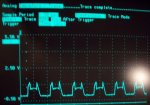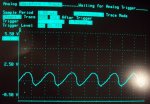I'm trying to monitor 24 volts between nil draw and up to 50 amps and I want to use the Allegro ACS 750
According to the many hours of surfing on the subject, It should wire straight in to the ADC input with a tant capacitor as a filter.
I would like some one to confirm this because in order to test the ACS750 at more than a couple of amps I have to wire it in and go for a drive. My bench power supply can do upto 5 amps but thats it.
BEFORE ANYONE HAS A STRESS AND WARNS ME ABOUT USING PICAXE IN A CRITICAL SYSTEM, It is in an electric scooter and if it fails I will just walk home pushing it, its not a critical, or even required sytem and the only problem it is liable to cause is the accelerated rate at which my hair is disappearing.
I think I might have to build a "dyno" to test it in the shed, does that mean it will be FULLY SIK because I have run it on a dyno?? Thats what the local hoons seem to think...
According to the many hours of surfing on the subject, It should wire straight in to the ADC input with a tant capacitor as a filter.
I would like some one to confirm this because in order to test the ACS750 at more than a couple of amps I have to wire it in and go for a drive. My bench power supply can do upto 5 amps but thats it.
BEFORE ANYONE HAS A STRESS AND WARNS ME ABOUT USING PICAXE IN A CRITICAL SYSTEM, It is in an electric scooter and if it fails I will just walk home pushing it, its not a critical, or even required sytem and the only problem it is liable to cause is the accelerated rate at which my hair is disappearing.
I think I might have to build a "dyno" to test it in the shed, does that mean it will be FULLY SIK because I have run it on a dyno?? Thats what the local hoons seem to think...



